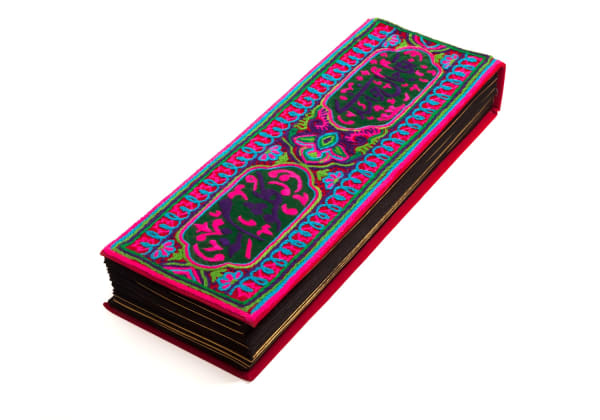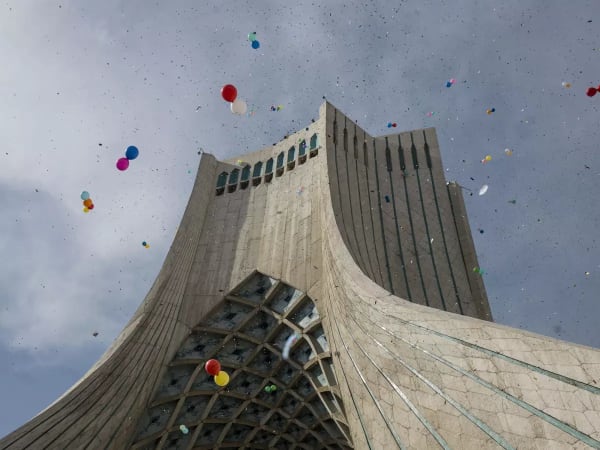Group Presentation: Frieze LA 2024
Dastan is pleased to announce its participation in Frieze LA 2024. The art fair will be open to public viewing from February 29 to March 3, 2024. Dastan’s presentation at booth B18 will feature a selection of artworks by Andisheh Avini (b. 1974), Homa Delvaray (b. 1980), Maryam Hoseini (b. 1988), Hoda Kashiha (b. 1986), Farideh Lashai (1944-2013), and Newsha Tavakolian (b. 1981).
Booth: B18
Date: February 29 - March 3, 2024
Preview: February 29 - 1 March, 2024
Location: Los Angeles, USA
Address: 3027 Airport Avenue, Santa Monica, 90405
-
 Installation View of Dastan's Booth at Frieze LA.
Installation View of Dastan's Booth at Frieze LA. -
 Installation View of Dastan's Booth at Frieze LA.
Installation View of Dastan's Booth at Frieze LA. -
 Installation View of Dastan's Booth at Frieze LA.
Installation View of Dastan's Booth at Frieze LA. -
 Installation View of Dastan's Booth at Frieze LA.
Installation View of Dastan's Booth at Frieze LA. -
 Installation View of Dastan's Booth at Frieze LA.
Installation View of Dastan's Booth at Frieze LA. -
 Installation View of Dastan's Booth at Frieze LA.
Installation View of Dastan's Booth at Frieze LA. -
 Installation View of Dastan's Booth at Frieze LA.
Installation View of Dastan's Booth at Frieze LA. -
 Installation View of Dastan's Booth at Frieze LA.
Installation View of Dastan's Booth at Frieze LA. -
 Installation View of Dastan's Booth at Frieze LA.
Installation View of Dastan's Booth at Frieze LA. -
 Installation View of Dastan's Booth at Frieze LA.
Installation View of Dastan's Booth at Frieze LA.
-

LACMA's Acquisition of Homa Delvaray's “Kolsum Naneh”
Los Angeles County Museum of Art July 25, 2024Dastan is proud to announce the recent acquisition of Homa Delvaray’s “Kolsum Naneh” (2012) by the Los Angeles County Museum of Art (LACMA). The hand-embroidered...Read more -

A guide to Frieze Los Angeles and an art extravaganza this weekend
Los Angeles Times March 4, 2024In a report by Alison Brower for the LA Times, the fifth edition of Frieze Los Angeles opened on February 29, transforming the city's art...Read more
At Booth B18, Frieze Los Angeles 2024, Dastan features a group presentation of works by Iranian artists Andisheh Avini (b. 1974), Homa Delvaray (b. 1980), Maryam Hoseini (b. 1988), Hoda Kashiha (b. 1986), Farideh Lashai (1944-2013), and Newsha Tavakolian (b. 1981). The art fair will be open to public viewing from February 29 to March 3, 2024, at Santa Monica Airport.
Composed predominantly of works by women, the presentation celebrates the careers of some of the most eminent figures in modern and contemporary Iranian art. It seeks to present glimpses into their practices and influences. Each takes a radically different approach to their work, and their work displays possibilities within their cultural thesaurus expressed through diverse means, including painting, bookmaking and print, photography, and sculpture.
Farideh Lashai was one of the most prominent and pioneering figures in Iran’s abstractionism. At Dastan’s booth, the striking fleeting moment of her painting creates an uncanny setting of a vivid yet quiet field, extended by the fragile glass sculptural balls of Andisheh Avini displayed on the floor.
Andisheh Avini’s practice merges traditional architecture, carpets, marquetry, feathers, and Negargâri Irâni(Persian Miniature) with quotes from minimalism, abstract expressionism, and other movements, evoking his multicultural background. In this presentation, his sculptures create a dynamic installation that interacts harmoniously with a photograph by Newsha Tavakolian from her recent exhibition “And They Laughed at Me” (Museo delle Culture, Milan, 2023).
Paintings from Hoda Kashiha’s recent series of works add an intriguing dimension to the display. In her work, materiality is transformed within the confines of a canvas: delineations of forms and subjects become edges where time and space become temporarily alienated to accommodate multiple narratives simultaneously. In this sense, her paintings simultaneously neglect and emphasize the physicality of painting while alluding to digital media and virtual ‘material.’
Maryam Hoseini delves into the creation of liminal worlds that serve as poignant explorations of gender construction and the inherent violence of power dynamics. Hoseini’s paintings become a gateway to a realm where the boundaries of subjectivity are probed, revealing fragmented architectural environments as the stages for unfolding narratives.
Meanwhile, Homa Delvaray’s “Kolsum-Naneh”, a hand-embroidered and silk-screen printed fabric book, works like a centerpiece, binding together the presentation. Delvaray’s piece follows a 17th-century book criticizing a series of superstitious beliefs and spells attributed to Iranian women of the era.






















